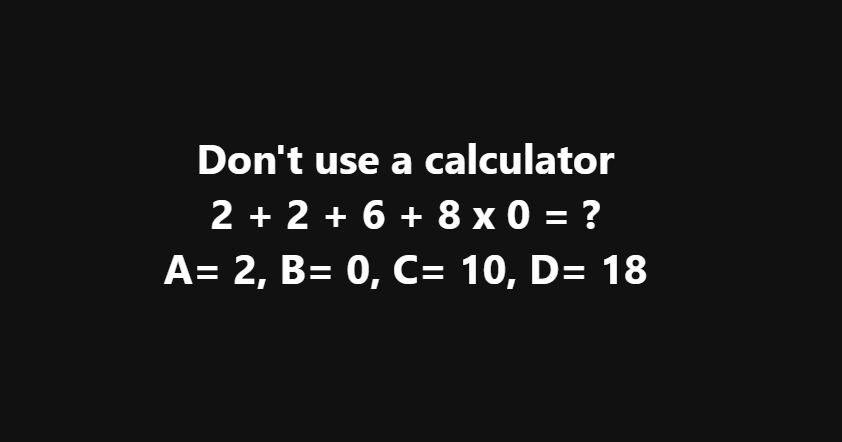The correct answer is 2 + 2 + 6 + (8 × 0).
Since multiplication comes before addition, we first calculate 8 × 0, which equals 0. Then:
2 + 2 + 6 + 0 = 10.
So the answer is 10.
The reason for the result is due to the order of operations, also known as PEMDAS (Parentheses, Exponents, Multiplication and Division (from left to right), Addition and Subtraction (from left to right)).
Here’s how it works for your equation:
2 + 2 + 6 + 8 × 0
- Multiplication comes before addition. So we first do the multiplication:
8 × 0 = 0. - Now the equation becomes:
2 + 2 + 6 + 0. - Addition is left to right, so we add the numbers in sequence:
2 + 2 = 4
4 + 6 = 10
10 + 0 = 10.
That’s why the answer is 10!
The rules of order of operations (PEMDAS) weren’t decided by a single person but were developed over time as mathematicians and scholars standardized mathematical procedures for consistency and clarity.
The concept of following a specific order to solve mathematical expressions dates back to ancient times. The order was formalized over the centuries to avoid confusion and ensure everyone solves problems the same way.
PEMDAS is essentially a convention, developed and widely adopted through mathematical practice and teaching. The idea is that by following a set order, everyone will interpret and solve expressions the same way. Without this, we’d likely get different results depending on who was solving the problem.
So, while no one person “decided” it, the rule emerged through collective mathematical tradition, particularly as algebra became more formalized in the 16th and 17th centuries.
